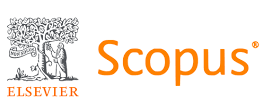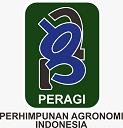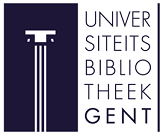Maggot Frass Fertilizer: Effects on Productivity and Economic Efficiency in Organic Vegetable Farming
Abstract
Maggot frass fertilizer derived from larvae waste processing represents an innovative organic fertilizer with significant potential for supporting sustainable agriculture implementation, particularly in organic vegetable commodities. This study aimed to analyze the technical effectiveness of maggot frass fertilizer application in organic vegetable cultivation and examine the economic efficiency of farming systems in Panji Village, Buleleng, Bali. Results demonstrated that maggot frass fertilizer application technically increased crop productivity by 15%. The study design has been clarified as a cross-sectional descriptive field study. Quantitative methods are used for effectiveness evaluation and business feasibility analysis, employing the R/C ratio. an average effectiveness value of 76.33% based on criteria including yield achievement, cost planning, and application dose appropriateness. Regarding economic efficiency, maggot frass reduced fertilizer costs by 29.73% with R/C ratios of 2.6 (non-organic) and 3.7 (organic), indicating high business feasibility. These findings suggest that maggot frass represents not only an effective agronomic innovation but also constitutes part of a sustainable agricultural approach based on local resources and principles of the circular economy. Therefore, institutional strengthening and policy support are required to enhance broader and more sustainable adoption of maggot frass technology.
Keywords
Full Text:
PDFReferences
Adamtey, N., Musyoka, M. W., Zundel, C., Cobo, J. G., Karanja, E., Fiaboe, K. K., Muriuki, A., Mucheru-Muna, M., Vanlauwe, B., & Foster, D. (2016). Productivity, profitability and partial nutrient balance in maize-based conventional and organic farming systems in Kenya. Agriculture, Ecosystems & Environment, 235, 61–79. https://doi.org/10.1016/j.agee.2016.10.020
Ahmad, I., Ullah, M., Alkafafy, M., Ahmed, N., Mahmoud, S. F., Sohail, K., Ullah, H., Ghoneem, W. M., Ahmed, M. M., & Sayed, S. (2022). Identification of the economics, composition, and supplementation of maggot meal in broiler production. Saudi Journal of Biological Sciences, 29(6), 103277. https://doi.org/10.1016/j.sjbs.2022.03.027
Amorim, H. C. S., Ashworth, A. J., Arsi, K., Rojas, M. G., Morales-Ramos, J. A., Donoghue, A., & Robinson, K. (2023). Insect frass composition and potential use as an organic fertilizer in circular economies. USDA-ARS Report.
Ahuja, I., Dauksas, E., Remme, J. F., Richardsen, R., & Løes, A.-K. (2020). Fish and fish waste-based fertilizers in organic farming – With status in Norway: A review. Waste Management, 115, 95–112. https://doi.org/10.1016/j.wasman.2020.07.025
Badan Pusat Statistik (BPS). (2021). Statistik Pertanian Indonesia 2021. Jakarta.
Batool, M., Tabinda, A. B., & Tahir, A. (2024). Black soldier fly larvae feed suitability for chicken and prospects for economic valuation and viability aspects. Journal of Insects as Food and Feed. https://doi.org/10.3920/JIFF2024
Beesigamukama, D., Mochoge, B., Korir, N., Menale, K., Muriithi, B., Kidoido, M., Kirscht, H., Diiro, G., Ghemoh, C. J., Sevgan, S., Nakimbugwe, D., Musyoka, M. W., Ekesi, S., & Tanga, C. M. (2022). Economic and ecological values of frass fertilizer from black soldier fly agro-industrial waste processing. Journal of Insects as Food and Feed, 8(3), 245–254. https://doi.org/10.3920/JIFF2021.0024
Chavez, M. Y., Uchanski, M., & Tomberlin, J. K. (2023). Impacts of black soldier fly (Diptera: Stratiomyidae) larval frass on tomato production. Journal of Economic Entomology, 116(5), 1490–1495. https://doi.org/10.1093/jee/toad150
Diyana, F.R., Hanani, N., & Shinta, A. (2025). Levels and factors influencing the technical efficiency of carrot farming in East Java, Indonesia. Agro Bali: Agricultural Journal, 8(1), 210–219.
Gram, G., Halm, M., & Nartey, R. (2020). Organic waste utilization for sustainable soil fertility management. Journal of Environmental Sustainability, 12(4), 223–235.
Handayani, I., Wibowo, A., & Putra, I.N. (2022). Penerapan Konsep Circular Economy pada Pertanian Hortikultura di Indonesia. Jurnal Ekonomi Pertanian dan Agribisnis, 6(2), 141–150.
Hanim, A. M., Purnamasari, W., Prasnowo, M. A., Wulandari, E. R., Aziz, M. S., & Indrasari, M. (2021). Maggot BSF cultivation development strategy as economic resilience during pandemic. SINERGI: Jurnal Ilmiah Ilmu Manajemen, 11(2), 45–54.
Hardjowigeno, S. (2020). Kesuburan Tanah dan Efisiensi Usahatani. Jakarta: Akademika Pressindo.
Jupesta, J., Permana, I., & Sahari, B. (2025). Assessing the efficiency of maggot production, nutritional value, and frass quality from different organic waste materials. BIO Web of Conferences, 175, 01001. https://doi.org/10.1051/bioconf/202517501001
Kurniawan, B., & Dewi, L. (2021). Strategi Efisiensi Biaya pada Usahatani Organik. Jurnal Agroekonomi, 12(4), 112–120.
Mahesti, F.L., Rosyida, R., & Karno, K. (2025). Growth responses and chlorophyll content of two varieties of tomatoes (Solanum lycopersicum L.) to natural plant growth regulators. Agro Bali: Agricultural Journal, 8(1), 46–55.
Mutafela, R. N., & Chabo, R. G. (2023). Valorization of black soldier fly frass for sustainable organic fertilizer production: A review. Journal of Cleaner Production, 395, 136416.
Nurindra, N. S., Sembada, P., Kusumanti, I., Ayuningtyas, G., & Priyambodo, D. (2024). Circular economic analysis of black soldier fly maggot cultivation as local chicken feed. Jurnal Ilmu Produksi dan Teknologi Hasil Peternakan (JIPI), 30(3), 483–492. https://doi.org/10.18343/jipi.30.3.483
Nuryati, S., & Supadi, S. (2015). LEISA (Low External Input Sustainable Agriculture): Konsep Pertanian Berkelanjutan dengan Input Rendah. Jurnal Agro Ekonomi, 33(1), 1–18.
Poveda, J. (2021). Insect frass in the development of sustainable agriculture: A review. Environmental Research, 194, 110707. https://doi.org/10.1016/j.envres.2021.110707
Purba, J.H., Wahyuni, P.S., & Febryan, I. (2019). Kajian pemberian pupuk kandang ayam pedaging dan pupuk hayati terhadap pertumbuhan dan hasil petsai (Brassica chinensis L.). Agro Bali: Agricultural Journal, 2(2), 77–88.
Putri, A.P., & Rahayu, W. (2021). Studi Komparasi Penggunaan Pupuk Organik Kasgot dan Pupuk Kimia pada Budidaya Pakcoy. Jurnal Pertanian Tropik, 8(3), 72–78.
Susilowati, S.H., & Purnamasari, D. (2022). Pengaruh Pupuk Kasgot terhadap Pertumbuhan dan Hasil Tanaman Sawi Hijau. Jurnal Hortikultura Indonesia, 13(2), 45–52.
Tambeayuk, M. A., Taiwo, O. J., Kamga, M. A., & Njuh, D. N. (2024). The economic viability and social acceptability of Black Soldier Fly Larvae frass as a substitute for chemical fertilizer in agriculture in Cameroon. Journal of Sustainable Environment, 3(1), 65–77. https://doi.org/10.58921/jse.03.01.065
Tanga, C. M., Beesigamukama, D., Kassie, M., et al. (2021). Performance of black soldier fly frass fertiliser on maize (Zea mays L.) growth, yield, nutritional quality, and economic returns. Wageningen Academic Publishers.
Terfa, G. N. (2021). Role of Hermetia illucens larvae frass bio-fertilizer on vegetable growth and sustainable farming in Sub-Saharan Africa. Ambo University Press.
Vanlauwe, B., Wendt, J., & Diels, J. (2015). Combined application of organic and mineral fertilizers for soil fertility management. Field Crops Research, 174, 45–56.
Wardhana, W. (2023). Analisis Kelayakan Usaha Produksi Pupuk Kasgot Berbasis Limbah Rumah Tangga. Jurnal Agribisnis dan Sosial Ekonomi Pertanian, 16(1), 23–32.
Yudiarini, N., & Pratiwi, L.P.K. (2024). Inovasi Teknologi Peningkatan Produksi Ikan Nila dan Pengembangan Pakan Mandiri Berbasis Ekonomi Sirkular. Jurnal Aplikasi dan Inovasi Iptek, 6(1), 178–188.
Zahra, F., & Wibowo, A. (2021). Pemanfaatan Maggot Black Soldier Fly (Hermetia illucens) sebagai Pengolah Limbah Organik dan Sumber Pupuk. Jurnal Pengelolaan Lingkungan, 12(3), 178–185
.
Refbacks
- There are currently no refbacks.


























